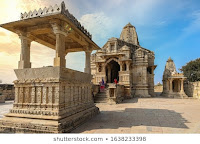Similitudes among Sanskrit and European dialects (particularly with Latin and Greek) was first seen by a shipper Filippo Sassetti, who lived in Goa somewhere in the range of 1583 and 1588 A.D.
Sir William Jones and numerous different researchers who were in the administration of East India Organization expounded the language similitudes (among European and Indian dialects).
Based on the similitudes, a few researchers proposed that the predecessors of Indians and Europeans, should at one at once, in a similar area and communicated in a similar language.
The researchers called this Indo-European language and their regular country as the Indo-European country. This made an incredible disparity of assessment on the issue of recognizing the first country of the Aryans, which was as yet a matter of discussion.
Various countries (of Aryans) have been propounded, for example, Steppe of focal Asia, southern Russia, southern Europe, Germany, Chinese Turkistan, or even Mediterranean region like Palestine and Israel. Everywhere, the Vedic language and its writing were found (aside from India).
The Apparatus Veda is the most established enduring records of the Aryans. It doesn't give any proof (even a doubt) of any relocation of Aryans from some other region.
Max Muller relegated period between 1,200 or 1,000 B.C. for this occasion. Max Muller as a genuine Christian put stock in Book of scriptures and as per Book of scriptures, the world was made on 23rd October 4,004 B.C. furthermore, along these lines Max Muller had the test to oblige the whole mankind's set of experiences inside the 6,000 years.
The Aryans were initially occupants of India and didn't come from outside as there is no archeological or natural proof, which could build up the appearance of any new individuals from outside between 5,000 B.C. furthermore, 800 B.C.
The skeletal remaining parts found from different Harappan destinations look like the skeletons of the advanced populace of a similar geological territory.
Harappan Progress and Rigveda
A cautious thought of the proof of the Apparatus Veda will prompt the end that references it contains about individuals and their progress might be taken to allude to the Harappan development.
The Revelation of Boghaz-Koi engraving (of fourteenth century B.C.) referenced Apparatus Vedic divinities that the Apparatus Veda existed before and the way of life relocated from India to Asia Minor in that early age.
The time span of the Apparatus Veda in its last structure should be put not later than around 3,000 B.C.
Likenesses between Apparatus Vedic and Harappan Developments
The topographical circulation of the Harappan locales can be found in the light of Apparatus Vedic topography too.
The topographical highlights, referenced in the Apparatus Veda, affirms the expansion of Vedic Human progress from Afghanistan in the north to Gujarat in the south, Ganga in the east to Kubha (Kabul) in the west.
The Apparatus Vedic culture was thrived in the region around the Saraswati waterway and its feeders; over 80% of the Harappan settlements are found around the Saraswati valley consequently it was the primary region of Harappan human progress.
The creatures known to the Indus public are additionally known to the Apparatus Veda, including sheep, canine, wild ox, bull, and so on
The creatures chased by the Apparatus Vedic individuals were gazelles, pigs, wild oxen (gaur), lions, and elephants the vast majority of them were likewise natural to the Indus public.
Pony puppet from Lothal
An Earthenware Puppet of Pony found from Lothal. The pony was a significant creature in the Vedic period. Pony bones and earthenware puppets have been found at some Harappan locales too.
A portion of the strict acts of the Harappan public like love of Pipal trees, bull, Siva-lingas are as yet followed by the advanced Hindus.
Some earthenware dolls of ladies found at Nausharo actually have vermillion in their hair-separating. Vermillion in the Hair Separating is the most valuable and sacrosanct image of wedded Hindu ladies even today.
An earthenware tablet from Harappa portrays the area of Mahisa penance, helping us to remember Mahisasuramardini.
The Harappan public knew about utilizing trimmings like hoops, neckbands, arm bands, anklets, wreaths, and gems.
Apparatus Veda specifies the utilization of gold and ayas (copper). Ayas was utilized in making of vessels.
The above-examined similitudes found between the Apparatus Vedic and Harappan human advancement have prompted the end that the Harappan progress is equivalent to the Vedic development and the Aryans didn't come to India from outside.










0 Comments